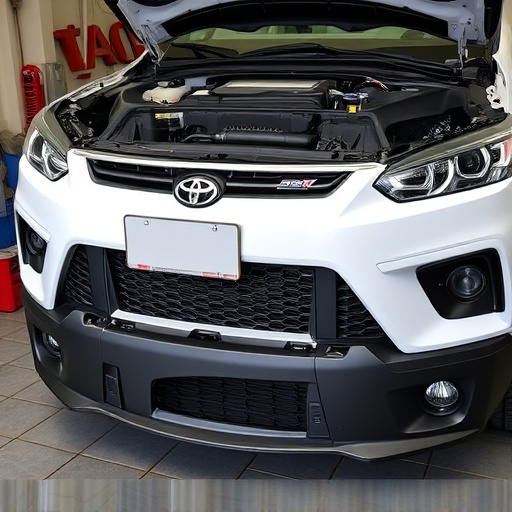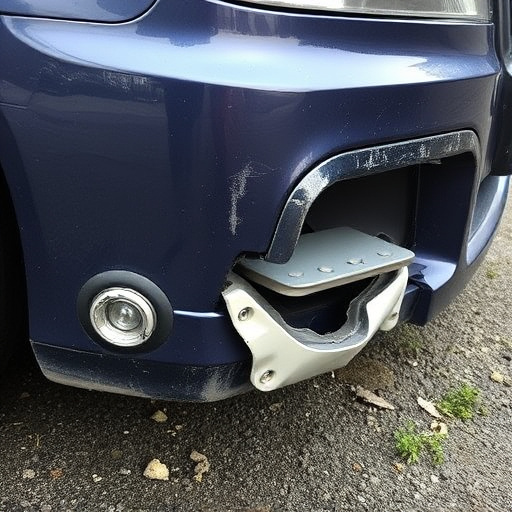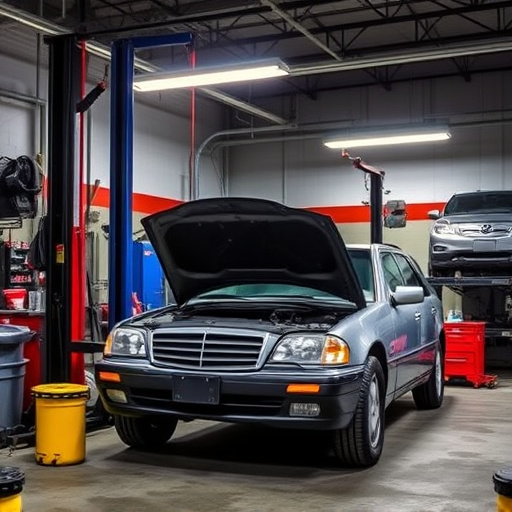Tesla's Thermal Management System is a comprehensive solution that regulates heat from electric motors and components to ensure battery pack efficiency and drivetrain health. Seamlessly integrated with Heating, Ventilation, and Air Conditioning (HVAC) networks, this system provides energy-efficient comfort and enhances range by minimizing heat losses. Regular checks of interconnected HVAC components are crucial for optimal Tesla vehicle performance, preventing damage, and ensuring balanced climate control in extreme weather conditions. Comprehensive thermal management checkups optimize performance, extend battery life, improve efficiency, and enhance driving experiences, particularly in challenging weather.
In today’s digital era, understanding the intricate thermal management systems within electric vehicles (EVs) is paramount, especially for high-performance models like Teslas. This article delves into the critical aspects of Tesla’s thermal management, focusing on the HVAC (Heating, Ventilation, and Air Conditioning) system integration. By exploring key components and optimization strategies, we uncover how efficient thermal control enhances vehicle performance, passenger comfort, and overall reliability, making it a game-changer in the EV industry.
- Understanding Tesla's Thermal Management System
- Key Components of HVAC Integration in Tesla Vehicles
- Optimizing Performance through Efficient Thermal Management
Understanding Tesla's Thermal Management System

Tesla’s Thermal Management System is a complex yet critical component that ensures optimal performance and passenger comfort across various driving conditions. At its core, this system is designed to regulate the internal temperature of the vehicle, managing heat generation from both the electric motor and other components. By efficiently dissipating heat, Tesla’s thermal management check maintains the efficiency of the vehicle’s battery pack and overall drivetrain health, which is essential for long-term performance.
Understanding how this system integrates with the Heating, Ventilation, and Air Conditioning (HVAC) network is key to appreciating Tesla’s innovation. The HVAC system plays a pivotal role in passenger comfort by controlling airflow and temperature inside the cabin. Through seamless integration, Tesla ensures that the thermal management system supports the HVAC’s efforts, creating an environment that is both energy-efficient and comfortable—a far cry from traditional auto repair near me solutions that often focus on quick fixes without considering holistic vehicle performance. This integration also allows for enhanced range management by minimizing heat-related losses, making it a game-changer in the world of electric vehicles, especially when compared to car collision repairs or paintless dent repairs that deal with external damage rather than internal system optimization.
Key Components of HVAC Integration in Tesla Vehicles

The integration of HVAC (Heating, Ventilation, and Air Conditioning) systems is a crucial aspect of Tesla vehicles’ overall performance and comfort. This complex network involves several key components that work in harmony to maintain optimal temperatures both inside and outside the vehicle. At the heart of it all is the efficient thermal management system, which serves as the linchpin for the entire process. Regularly checking this system is vital, especially when coupled with meticulous auto repair near me services, to ensure peak functionality.
When discussing Tesla thermal management check, one cannot overlook the intricate interplay between the HVAC controller, sensors, and evaporators/condensers. The controller acts as the brain, regulating temperature based on passenger preferences and external conditions. Sensors monitor various parameters like cabin and ambient temperatures, ensuring precise control. Evaporators cool the air, while condensers extract heat from exhaust gases, both contributing to a balanced climate control system. Efficient integration ensures that these components work synergistically, preventing car damage repair and maintaining optimal conditions, even in extreme weather conditions.
Optimizing Performance through Efficient Thermal Management

Tesla vehicles, renowned for their cutting-edge technology and sleek design, demand optimal performance from every component. Efficient thermal management is a cornerstone in achieving this, ensuring the vehicle’s electrical systems and batteries operate at peak efficiency. A thorough Tesla thermal management check includes evaluating the HVAC (Heating, Ventilation, and Air Conditioning) system integration, which plays a pivotal role in maintaining ideal interior temperatures while minimizing energy consumption.
By integrating advanced thermal management strategies with the HVAC system, Tesla can mitigate heat buildup in sensitive components like batteries and electronics, enhancing overall vehicle performance and extending battery life. This optimization not only contributes to better fuel efficiency but also enhances the overall driving experience, especially in extreme weather conditions. For luxury vehicle repair enthusiasts, understanding these systems is crucial, as it opens doors to tailoring repairs for specific models, including the popular auto painting services required for maintaining a vehicle’s aesthetic appeal and resale value.
Tesla’s advanced thermal management system and seamless HVAC integration are key factors contributing to the optimal performance and comfort of its vehicles. By understanding these systems, owners can perform a thorough Tesla thermal management check to ensure efficient cooling and heating. This, in turn, enhances overall vehicle efficiency, reduces energy consumption, and provides a more enjoyable driving experience.














